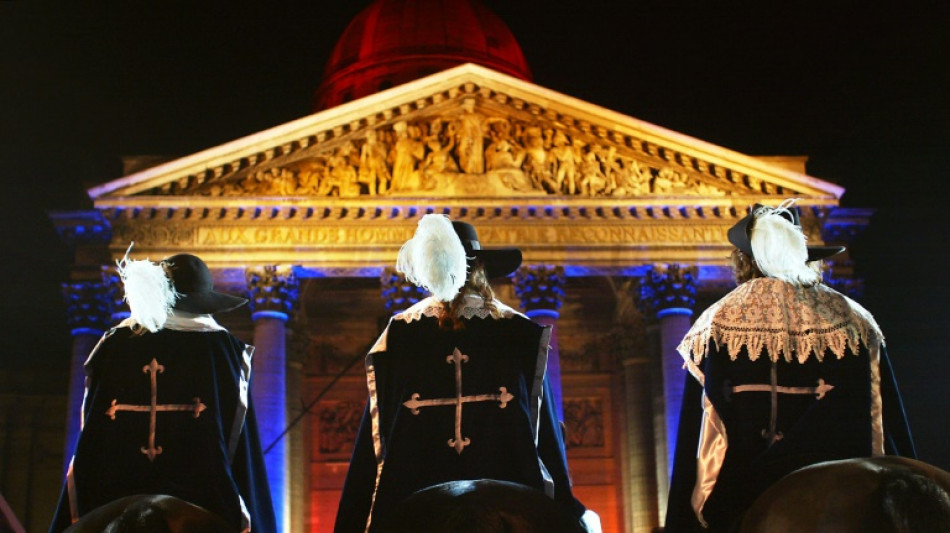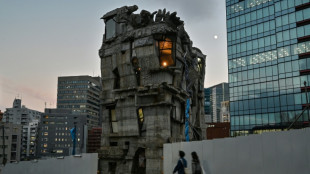

Cinema's undying love for Dumas and his Musketeers
The work of French author Alexandre Dumas has attracted stars since the birth of cinema, through silent-era hero Douglas Fairbanks and Leonardo DiCaprio, not forgetting a certain Volodymyr Zelensky and -- almost -- The Beatles.
The 19th century writer's popularity shows no signs of dimming -- a flashy new version of "The Three Musketeers" hits French screens next week, while "The Count of Monte Cristo" starts filming this summer.
There have been more than 250 adaptations of his books, including popular takes on "Queen Margot" and "The Man in the Iron Mask", which gave a starring role to DiCaprio in 1998.
But it is the plume-hatted musketeers that have been the most popular, stretching back to the first film version in Britain in 1898.
Fairbanks became a swashbuckling megastar thanks to a 1921 version, while the story was relocated to a French Foreign Legion in North Africa for John Wayne in 1933, and thousands of marionettes were used for an Italian puppet version a few years later.
The Beatles almost donned the capes in the 1960s, but eventually passed the roles to Charlton Heston and Oliver Reed.
And Hollywood keeps them coming, from the "Brat Pack" version in the 1990s with Charlie Sheen and Kiefer Sutherland, to the little-loved 2011 remake featuring Milla Jovovich, Orlando Bloom and some flying battleships.
Argentine, Indian, Mexican and even Soviet versions have also been seen over the years.
One of the most unlikely -- particularly from the current perspective -- is a 2004 Russian-language version in which the musketeers are all women and D'Artagnan is played by a young Zelensky, now president of war-torn Ukraine.
- 'Courage, panache' -
"It's a book that travels easily through time," Martin Bourboulon, director of the latest iteration, "The Three Musketeers: D'Artagnan", told AFP.
"It's the values of camaraderie, courage, panache and solidarity that make it so interesting."
It helps that Dumas was a pioneer of the sort of writing that has shaped modern cinematic storytelling -- from his fast-paced action scenes to the multiple cliffhangers that punctuate each section.
Dumas, then 41, wrote the 1844 novel to appear in serialised form, which was all the rage thanks to new periodicals.
"He has a sense of rhythm, of knowing when to accelerate, when to pause and build intrigue," added biographer Sylvain Ledda.
"Plus, he's very funny with the best of the French spirit: his signature style, the fantasy, the derision."
Dumas may even have appreciated his name-check in 90s classic "The Shawshank Redemption", where the inmates enjoy the prison-break in "The Count of Monte Cristo" but mispronounce his name as "Alexander Dumb-ass".
O.Somerville--NG



